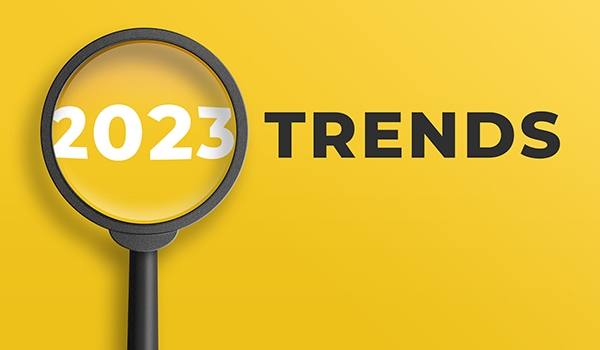Five Trends That Will Shape Logistics in 2023

Amidst concern over the economy and ongoing geopolitical issues, 2023 promises to pose challenges to managing logistics and supply chain operations. To help companies prepare for the new year, Anaid Chacón, head of product for Nuvocargo, a digital platform focused on U.S.-Mexico cross-border trade, identifies five trends to be aware of.
Amidst concern over the economy and ongoing geopolitical issues, 2023 promises to pose challenges to managing logistics and supply chain operations. To help companies prepare for the new year, Anaid Chacón, head of product for Nuvocargo, a digital platform focused on U.S.-Mexico cross-border trade, identifies five trends to be aware of.
1. Digitization, data, and visibility: The ongoing shift from manual to digital methods in supply chain processes will continue. Potential benefits to making this shift include increased access to insights through data mining, which can lead to better decision-making and increased supply chain visibility.
2. Reshoring and nearshoring for manufacturers: As the U.S.-China relationship continues to deteriorate, manufacturers are re-examining production strategies. Near the beginning of the pandemic, 64% of North American manufacturers responding to a Thomas Industrial Survey said they were likely to return manufacturing production and sourcing back to the Americas. As shipping costs from China increase, this trend should continue in 2023.
3. Rising diesel prices: Diesel fuel prices rose 55% in the first half of 2022. The war in Ukraine and implementation of International Maritime Organization 2020 regulations drove this growth, but no relief is on the horizon. Expect rising diesel prices to continue into 2023.
4. Sustainable shipping and environmental regulation: Driven by new regulations and consumer demands, logistics companies face significant pressure to create sustainable business practices. Given that the U.S. Securities and Exchange Commission now requires public companies to include climate-related disclosures, including risks associated with climate change, in their annual report, this trend should continue into 2023 and beyond.
5. Automation: Transportation and warehousing often are cited as two sectors with tremendous potential to benefit from automation. The promise of artificial intelligence, machine learning, and connected internet-of-things networks, for example, show promise to optimize logistics. Companies will continue to examine these processes in 2023.
